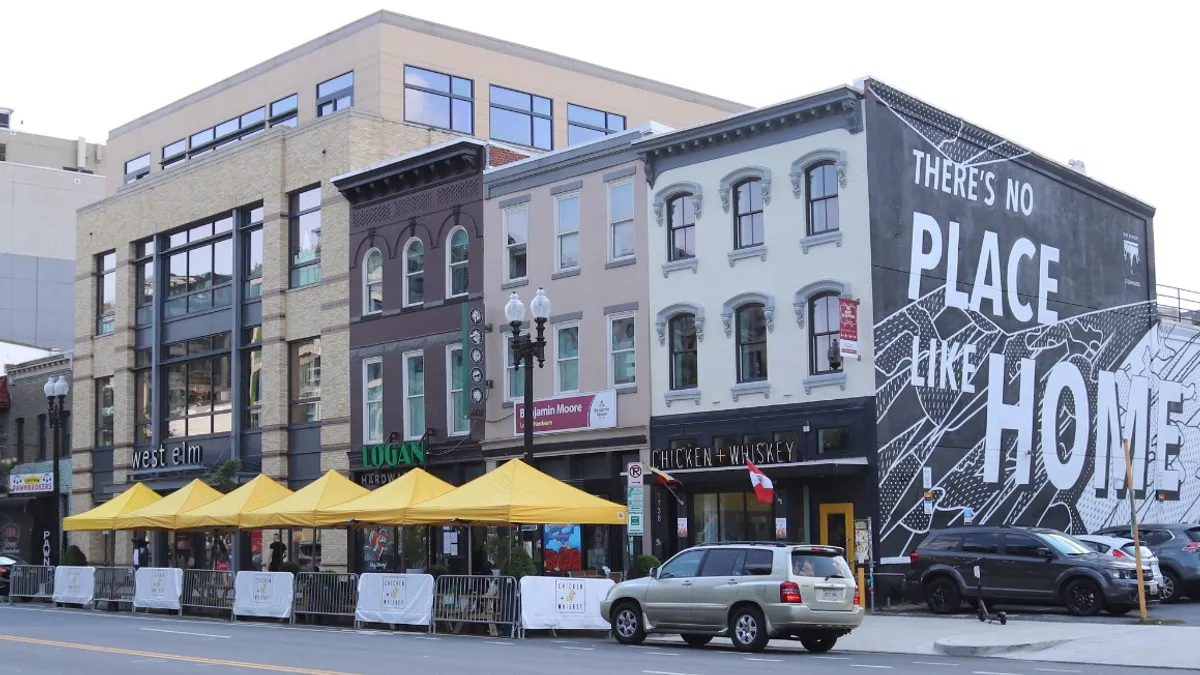Dive Brief:
- Washington, D.C.'s Office of Nightlife and Culture announced a $4 million grant program Monday to help restaurants and non-food retail businesses outfit their outdoor areas for winter. The program offers $6,000 to businesses with active sidewalk cafe permits, including temporary "streatery" permits, or private outdoor spaces. The program began accepting applications Monday, and funds will be distributed starting Oct. 1 on a rolling basis.
- Applicants must submit a budget for planned winterization expenses for approval before funds are dispersed. Grants can be put toward expenses including tents, heaters, propane, furniture, advertising and operational costs of outdoor space. Funds must be used and expenditures reported by Nov. 30. All independent and locally owned businesses may apply, but non-local franchises are ineligible for the grants.
- Washington, D.C., joins other regional programs created to help restaurants prepare for winter. Chicago launched a Winter Design Challenge on Aug. 25 and three winners will be awarded $5,000 each.
Dive Insight:
The impending winter is stoking restaurant operator fears, and for good reason. In markets like New York, for example, restaurants have only just been allowed to open for 25% indoor dining capacity, which wouldn't be enough to sustain business if a significant portion of outdoor dining traffic drops off when the weather grows cold. In Washington, D.C., restaurants are allowed to open for 50% dining room capacity, but there is no percentage maximum for outdoor dining — an advantage that the district's new grant program could help protect.
The total available grant funding would cover 666 restaurants, according to DCist, and the D.C. government has approved almost 600 "streateries" in the area, or restaurants that can block off parts of the street for outdoor dining. Chicago has a similar program called "Make Way" in place that blocks off city streets, allows restaurants without patio space to seat diners outside and increases the footprints of operators already with outdoor space. Chicago has also capped indoor dining capacity at 25%, and the Illinois Restaurant Association has lobbied the city to raise capacity allowances to 50%.
The Windy City also released fall and winter dining rules last week, which include stipulations that a single tent cannot be used for cooking and dining at the same time, and temporary patio structures used for multiple parties must have at least 50% of sides open to allow for air flow.
The consequences of cooler temperatures are already being felt across some states. Local news outlet WFSB estimated that crisp weather this past weekend could cost Connecticut restaurants millions of dollars. And that's the potential impact when the forecast dips into the 30-degree temperature range; once rain and snow begin to pick up, the impact could be much worse for restaurants across the country, especially because some restaurants have found that covered patio options can cost around $75,000.
Outdoor dining has already been on tenuous footing in some regions without the added complication of cooling weather. In August, New York Gov. Andrew Cuomo said he was considering ending outdoor dining in the fall to prevent a second wave of coronavirus infections. And now that the Centers for Disease Control and Prevention has found that adults who have tested positive for COVID-19 were approximately twice as likely to have reported dining at a restaurant in the two weeks before becoming sick than study participants that tested negative for COVID-19, there could be more uncertainty among city leaders and diners. The CDC's report, however, doesn't disclose if participants ate inside restaurant dining rooms or on patios, and didn't state the risk factors of each.










